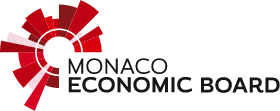
Sometimes I am consulted for real masterpieces and there I do not sulk my pleasure! This last mission just before leaving on vacation brings me to see a plaster sculpture signed RODIN which unfortunately has been damaged. Precisely, a similar work is announced in public sale in CANNES. The insurance company asks me to evaluate the damage.
Auguste Rodin (1840-1917), our famous French artist, whose coastline rose to +98% between 2000 and 2018 according to the site ARTPRICE yet had a lot of difficulty imposing his style during his lifetime. He failed 3 times the entrance exam to the Ecole des Beaux Arts in Paris. His legend is built on a late recognition.
Coincidence with my disaster, the auction of a similar plaster was sold for more than 100,000 euros at the MARTINEZ hotel in CANNES under the hammer of Maître BESCH. On the news website RTL we can read "The work dating from 1896 and offered by the sculptor to his friend Claude Monet was sold for 108,000 euros, Wednesday, August 15".
This sale took place a few days after our report was filed; no estimate was given in the sale catalog.
An estimate of the damaged work dated 2015 was written by an Art Expert of foreign nationality for a value of 25,000 euros in "private treaty value".
How to explain such a difference between this estimate and the August 15 sale?
It seems to me that these parameters can be advanced in other :
Let's go back to our claim: after having established the circumstances and the responsibilities, we validated a restoration estimate of 3,000 euros which takes into account the transport costs with insurance to the workshop. Moreover, the professional specified that he would apply the reversibility method, i.e. that the materials and means used for the restoration would not destroy the work.
In conclusion, we immediately signed a contradictory appraisal report with my colleague, enabling us to meet our commitments to our principals in terms of deadlines. In this case, the overriding interest of safeguarding artistic heritage is an argument to be taken into account when valuing works of art.



